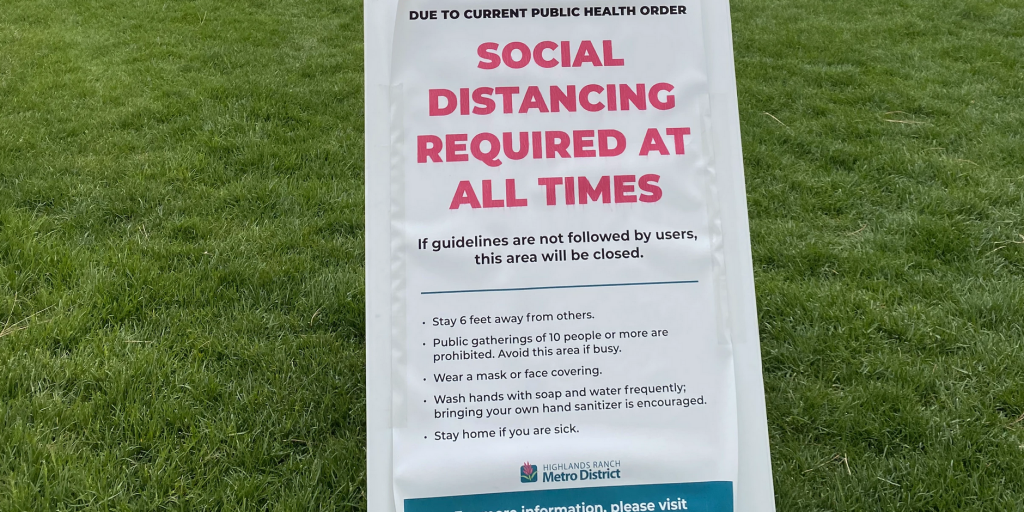A step-by-step reopening checklist for local government facilities managers
State and local governments have been on the frontlines of the COVID-19 public health crisis. As the novel coronavirus spread like wildfire across American cities and counties, government leaders were forced to make swift and consequential decisions to protect their communities. Schools closed or transitioned to virtual learning, mandatory stay-at-home or shelter-in-place orders forced residential quarantines, sports were canceled, public events called-off — everyone was bracing for the worst as guidance shifted daily with each breaking news bulletin.
New regulations varied from state to state, city to city and county to county as policymakers and local public health officials evaluated the ever-changing threat of the virus while attempting to lessen the sometimes devastating economic impact these measures instantly had on local businesses. The critical task of reopening has begun. But with the threat of the virus looming, governments can’t go back to business as usual. We are living in a “new normal.”
Municipal government facility maintenance professionals are confronting a myriad of challenges right now as they prepare for safe operations in a post-Coronavirus environment. Essential state and local government entities have had to think on their feet. Some entities have already implemented creative protocols. Housing Authorities, for example, are demonstrating incredible dedication to their residents by moving to electronic leasing forms and completing maintenance and renovation projects on common areas and unoccupied units. Their successes are examples of how, no matter what the circumstances, mission-based organizations can find creative solutions to support the people they serve.
Strategic reopening plans must be carefully grounded in a new regulatory reality and framed with facilities’ needs first. Peoples’ homes have become their refuges and as the doors of our communities open, the safety provided at home will need to extend into shared spaces. Facilities needs and adaptations are at the forefront as we re-imagine office spaces, schools, community parks and recreation, courtrooms, correctional facilities and police stations, voting booths and the myriad of other rooms and arenas we used to frequent together without much consideration for contagions. Now, each cough is heard like an alarm.
Here are 12 tactical facilities modifications and improvements that will help ensure state and local entities are ready to safely, responsibly reopen.
- Install handwashing stations: One of the best weapons against COVID-19 is soap. Handwashing with soap removes germs from hands, one of the main conduits for germs to reach one’s eyes, nose and mouth and enter the body.
- Remove soft flooring and wall finishes and install sheet or epoxy flooring: Updating or replacing existing flooring and wall finishes for more durable, resistant surfaces will promote easier disinfection processes.
- Increase safety and security measures: taken on a broader meaning in this post-pandemic world. Secure buildings are already setup to monitor who and what enters the property but hidden threats, such as viral infections and disease, have previously gone unchecked. Metal detectors may be joined by infrared scanners at building entrances to take visitors’ or residents temperatures, helping to prevent the spread of pathogens. This technology is already in use at some airports.
- Update outdated technology and add electrical and data outlets: Technology has held us together in the age of COVID-19. Accommodating social distancing and limiting human to human contact will mean more data and device usage in schools, businesses and government processes. Many businesses have also realized some work can be done virtually and bringing everyone together in one physical space to meet may be a thing of the past – so upgrading tech to accommodate virtual meetings will be essential.
- Install plexiglass partitions and physical barriers: COVID-19 is thought to spread mainly from person-to-person through respiratory droplets produced as people speak, cough or sneeze. Therefore, limiting germ contact and maintain social distancing is the best way to prevent the spread of the virus.
- Install no-touch technologies: Limiting human contact within facilities will help minimize the number of disinfection services needed. Contactless restroom equipment, garbage and recycling systems, light switches/occupancy sensors, crosswalks, hand sanitizers, doors, card readers, etc. are all great upgrades to help keep facilities safe.
- Make elevator modifications: Social distancing guidelines recommend six feet of distance between each person in order to limit the spread of the virus. Touching elevator buttons in an enclosed space will need to be reconsidered.
- Sanitize and decontaminate spaces: Regularly scheduled disinfection and sanitization of frequently used spaces will be critical to maintaining healthy common areas. In addition to an increase in sanitation frequency on contact surfaces, providing disinfectant and sanitizing supplies to all building occupants will reduce the possibility of the virus within the facility.
- Upgrade/modify HVAC, ductwork and filtration systems: Filtration in building heating, ventilation and air conditioning (HVAC) systems can be a part of an overall risk mitigation approach to help remove particles from the air.
- Install anti-microbial/bacterial coatings and surfaces: Coronavirus can survive on some surfaces for hours. To prevent the initial adhesion of the cells to surfaces, combatting the growth of bacterial cells, special coatings and resilient surfaces can be used.
- Reduce workspace and conference room density: To comply with social distancing guidelines, it will be important to limit the number of people in each conference space and ensure there are partitions or at least six feet of distance between each seat.
- Re-configure spaces to support social distancing guidelines: Social distancing guidelines are likely to impact each shared space within municipal facilities. Thoughtful plans and clear signage will need to be considered to encourage people maintain a safe distance while using the facilities.
This may look like a daunting list, especially since government procurement processes have a reputation for gridlock. A lack of resources, funds or both can cause these renovation and alteration projects to threaten the safety and quality of life for residents. The expansion of services and growing adoption of cooperative contracts has resulted in a process with advantages essential for today’s government leaders. By establishing local, competitively-awarded contracts through cooperative purchasing networks, agencies can allow work to immediately begin on facility and infrastructure repairs, renovations, alterations and modernizations. That all adds up to faster delivery and greater cost control. By taking new approaches to everyday operations, embracing modern technology and working with trusted partners, state and local governments can continue to serve community needs and preserve community health.
Alyssa Chapman serves as Gordian’s National Vice President of Sales. She has more than 20 years of experience in business development and sales leadership in enterprise technology and information services.




















